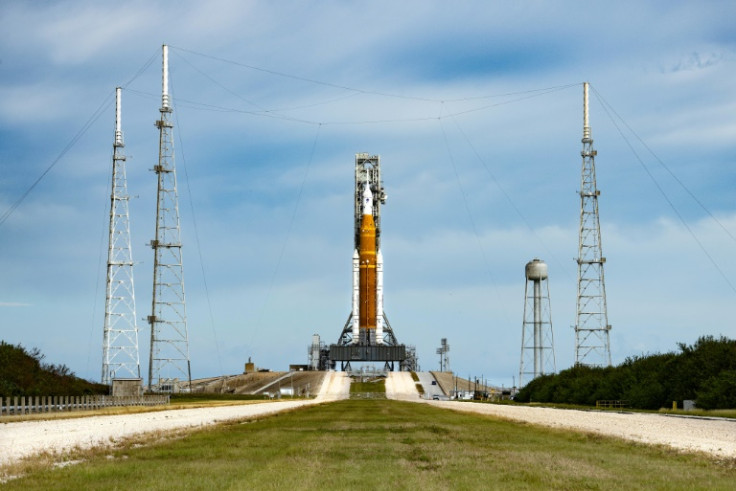Satellite Captures Water Trail Of Artemis 1 As It Zips Past Earth [Watch]
After several delays, the NASA Artemis 1 rocket finally lifted off Wednesday. An orbiting weather satellite captured the water trail of the Space Launch System (SLS) as it moved past Earth's atmosphere.
The Artemis 1 rocket can be seen as a streak in the footage captured by the Geostationary Operational Environmental Satellite Program (GOES) East satellite, tweeted by National Oceanic and Atmospheric Administration (NOAA).
"You can see the rocket streaking through the atmosphere in this water vapor imagery," NOAA said in the tweet.
.@NOAA's #GOESEast satellite captured the early morning launch of NASA's #Artemis I from @NASAKennedy in Florida! You can see the rocket streaking through the atmosphere in this water vapor imagery. https://t.co/8EN9KfWliM pic.twitter.com/lybvk01si4
— NOAA Satellites (@NOAASatellites) November 16, 2022
The Artemis 1 mission was launched in the darkness of the night at 1:47 a.m. EST, reported Space.com. Yet, the GOES-East satellite was able to capture the launch by the water trail made by the SLS rocket.
GOES-East satellite has a mid-level water vapor band, and its main purpose is to observe jet streams, predict storms and hurricanes, and estimate moisture, according to the NOAA backgrounder page. The satellite looks at winds in the troposphere, the lowest layer of the atmosphere.
Artemis 1 is part of NASA's lunar program to put astronauts on the moon after a gap of 50 years. The repeated delays in its launch, due to various reasons, cost the agency billions in overhead. Nevertheless, the rocket blasted off the coast of Florida from Kennedy Space Center on 8.8 million pounds of thrust and reached speeds of 100 miles per hour within seconds.
"I'm telling you, we've never seen such a tail of flame," said NASA Administrator Bill Nelson, who followed the launch with a group of astronauts, as reported by EuroNews.
Part of the Artemis 1 mission was the Orion spacecraft, sitting atop the SLS rocket. Within 2 hours of the launch, the capsule escaped the Earth's orbit and made its way to the moon. Aboard the rocket is three dummies.
"For the Artemis generation, this is for you," launch director Charlie Blackwell-Thompson said moments before the launch. Blackwell-Thompson was referring to the generation of people who were born after the Apollo program.
The Artemis 1 mission plan is to complete a three-week flight, at the end of which, the rocket will release a capsule into an orbit around the Moon. The rocket will then proceed to Earth landing in the Pacific in December.
The mission is aptly named after the goddess Artemis, who was Apollo's twin sister in Greek mythology. The complete mission is divided into three phases. Now that Artemis 1 has already made its debut, the next phase is Artemis 2, which will be a crewed mission to orbit the moon and return, not before 2024. The final phase, Artemis 3, will mark the return of astronauts to the surface of the moon, scheduled around 2025-2026.

© Copyright IBTimes 2024. All rights reserved.





















